When did people start living in mobile homes?
This article is about the prefabricated structure referred to as a mobile home. For recreation vehicles sometimes referred to as mobile homes, see Recreational vehicle . For other uses, see Mobile home (disambiguation)
"Static Caravan" redirects here. For the record label, see Static Caravan Recordings
"House on wheels" redirects here. For the South Korean variety show, see House on Wheels
Typical mobile home from the late 1960s and early 1970s: 12 by 60 feet (3.7 by 18.3 m) 1958 photo of Zimmer trailer in a trailer park in Tampa, FloridaA mobile home (also known as a house trailer, park home, trailer, or trailer home) is a prefabricated structure, built in a factory on a permanently attached chassis before being transported to site (either by being towed or on a trailer). Used as permanent homes, or for holiday or temporary accommodation, they are often left permanently or semi-permanently in one place, but can be moved, and may be required to move from time to time for legal reasons.
Mobile homes share the same historic origins as travel trailers, but today the two are very different, with travel trailers being used primarily as temporary or vacation homes. Behind the cosmetic work fitted at installation to hide the base, mobile homes have strong trailer frames, axles, wheels, and tow-hitches.
History
[
edit
]
In the United States, this form of housing goes back to the early years of cars and motorized highway travel.[1] It was derived from the travel trailer (often referred to during the early years as "house trailers" or "trailer coaches"), a small unit with wheels attached permanently, often used for camping or extended travel. The original rationale for this type of housing was its mobility. Units were initially marketed primarily to people whose lifestyle required mobility. However, in the 1950s, the homes began to be marketed primarily as an inexpensive form of housing designed to be set up and left in a location for long periods of time or even permanently installed with a masonry foundation. Previously, units had been eight feet or fewer in width, but in 1956, the 10-foot (3.0 m) wide home ("ten-wide") was introduced, along with the new term "mobile home".[2]
The homes were given a rectangular shape, made from pre-painted aluminum panels, rather than the streamlined shape of travel trailers, which were usually painted after assembly. All of this helped increase the difference between these homes and home/travel trailers. The smaller, "eight-wide" units could be moved simply with a car, but the larger, wider units ("ten-wide", and, later, "twelve-wide") usually required the services of a professional trucking company, and, often, a special moving permit from a state highway department. During the late 1960s and early 1970s, the homes were made even longer and wider, making the mobility of the units more difficult. Nowadays, when a factory-built home is moved to a location, it is usually kept there permanently and the mobility of the units has considerably decreased. In some states, mobile homes have been taxed as personal property if the wheels remain attached, but as real estate, if the wheels are removed. Removal of the tongue and axles may also be a requirement for real estate classification.
Manufactured home
[
edit
]
Example of a modern manufactured home in New Alexandria, Pennsylvania. 28 by 60 feet (8.5 m × 18.3 m)Mobile homes built in the United States since June 1976, legally referred to as manufactured homes, are required to meet FHA certification requirements and come with attached metal certification tags. Mobile homes permanently installed on owned land are rarely mortgageable, whereas FHA code manufactured homes are mortgageable through VA, FHA, and Fannie Mae.
Many people who could not afford a traditional site-built home, or did not desire to commit to spending a large sum of money on housing, began to see factory-built homes as a viable alternative for long-term housing needs. The units were often marketed as an alternative to apartment rental. However, the tendency of the units of this era to depreciate rapidly in resale value[citation needed] made using them as collateral for loans much riskier than traditional home loans. Terms were usually limited to less than the thirty-year term typical of the general home-loan market, and interest rates were considerably higher.[citation needed] In that way, mobile home loans resembled motor vehicle loans more than traditional home mortgage loans.
Construction and sizes
[
edit
]
Exterior wall assemblies being set in place during manufactureMobile homes come in two major sizes, single-wides and double-wides. Single-wides are 18 feet (5.5 m) or less in width and 90 feet (27 m) or less in length and can be towed to their site as a single unit. Double-wides are 20 feet (6.1 m) or more wide and are 90 feet (27 m) in length or less and are towed to their site in two separate units, which are then joined. Triple-wides and even homes with four, five, or more units are also built but less frequently.
While site-built homes are rarely moved, single-wide owners often "trade" or sell their home to a dealer in the form of the reduction of the purchase of a new home. These "used" homes are either re-sold to new owners or to park owners who use them as inexpensive rental units. Single-wides are more likely to be traded than double-wides because removing them from the site is easier. In fact, only about 5% of all double-wides will ever be moved.[citation needed]
While an EF1 tornado might cause minor damage to a site-built home, it could do significant damage to a factory-built home, especially an older model or one that is not properly secured. Also, structural components (such as windows) are typically weaker than those in site-built homes.[3] 70 miles per hour (110 km/h) winds can destroy a mobile home in a matter of minutes. Many brands offer optional hurricane straps, which can be used to tie the home to anchors embedded in the ground.
Regulations
[
edit
]
United States
[
edit
]
Home struck by F2 tornadoIn the United States, mobile homes are regulated by the US Department of Housing and Urban Development (HUD), via the Federal National Manufactured Housing Construction and Safety Standards Act of 1974. This national regulation has allowed many manufacturers to distribute nationwide because they are immune to the jurisdiction of local building authorities.[4] [5]: 1 By contrast, producers of modular homes must abide by state and local building codes. There are, however, wind zones adopted by HUD that home builders must follow. For example, statewide, Florida is at least wind zone 2. South Florida is wind zone 3, the strongest wind zone. After Hurricane Andrew in 1992, new standards were adopted for home construction. The codes for building within these wind zones were significantly amended, which has greatly increased their durability. During the 2004 hurricanes in Florida, these standards were put to the test, with great success. Yet, older models continue to face the exposed risk to high winds because of the attachments applied such as carports, porch and screen room additions. Such areas are exposed to "wind capture" which apply extreme force to the underside of the integrated roof panel systems, ripping the fasteners through the roof pan causing a series of events which destroys the main roof system and the home.
The popularity of the factory-built homes caused complications the legal system was not prepared to handle. Originally, factory-built homes tended to be taxed as vehicles rather than real estate, which resulted in very low property tax rates for their inhabitants. That caused local governments to reclassify them for taxation purposes.
However, even with that change, rapid depreciation often resulted in the home occupants paying far less in property taxes than had been anticipated and budgeted. The ability to move many factory-built homes rapidly into a relatively small area resulted in strains to the infrastructure and governmental services of the affected areas, such as inadequate water pressure and sewage disposal, and highway congestion. That led jurisdictions to begin placing limitations on the size and density of developments.
Early homes, even those that were well-maintained, tended to depreciate over time, much like motor vehicles. That is in contrast to site-built homes which include the land they are built on and tend to appreciate in value. The arrival of mobile homes in an area tended to be regarded with alarm, in part because of the devaluation of the housing potentially spreading to preexisting structures.
This combination of factors has caused most jurisdictions to place zoning regulations on the areas in which factory-built homes are placed, and limitations on the number and density of homes permitted on any given site. Other restrictions, such as minimum size requirements, limitations on exterior colors and finishes, and foundation mandates have also been enacted. There are many jurisdictions that will not allow the placement of any additional factory-built homes. Others have strongly limited or forbidden all single-wide models, which tend to depreciate more rapidly than modern double-wide models.
Apart from all the practical issues described above, there is also the constant discussion about legal fixture and chattels and so the legal status of a trailer is or could be affected by its incorporation to the land or not. This sometimes involves such factors as whether or not the wheels have been removed.
North Carolina
[
edit
]
The North Carolina Board of Transportation allowed 14-foot-wide homes on the state's roads, but until January 1997, 16-foot-wide homes were not allowed. 41 states allowed 16-foot-side homes, but they were not sold in North Carolina. Under a trial program approved January 10, 1997, the wider homes could be delivered on specific roads at certain times of day and travel 10 mph below the speed limit, with escort vehicles in front and behind.[6][7] Eventually, all homes had to leave the state on interstate highways.[8]
In December 1997, a study showed that the wider homes could be delivered safely, but some opponents still wanted the program to end.[9] On December 2, 1999, the NC Manufactured Housing Institute asked the state Board of Transportation to expand the program to allow deliveries of 16-foot-wide homes within North Carolina.[8] A month later, the board extended the pilot program by three months but did not vote to allow shipments within the state.[10] In June 2000, the board voted to allow 16-foot-side homes to be shipped to other states on more two-lane roads, and to allow shipments in the state east of US 220. A third escort was required, including a law enforcement officer on two-lane roads.[11]
New York
[
edit
]
In New York State, the Homes and Community Renewal agency tracks mobile home parks and provides regulations concerning them. For example, the agency requires park owners to provide residents with a $15,000 grant if residents are forced to move when the land is transferred to a new owner. Residents are also granted the right of first refusal for a sale of the park, however, if the owner does not evict tenants for five years, the land sale can go ahead. State law also restricts the annual increase in land lot fee to a cap of 3 percent, unless the landowner demonstrates hardship in a local court, and can then raise the land lot fee by up to 6 percent in a year.[12]
Mobile home parks
[
edit
]
Meadow Lanes Estates Mobile Home Park, Ames, Iowa, August 2010, during a floodMobile homes are often sited in land lease communities known as trailer parks (also 'trailer courts', 'mobile home parks', 'mobile home communities', 'manufactured home communities', 'factory-built home communities' etc.); these communities allow homeowners to rent space on which to place a home. In addition to providing space, the site often provides basic utilities such as water, sewer, electricity, or natural gas and other amenities such as mowing, garbage removal, community rooms, pools, and playgrounds.
There are over 38,000[13] trailer parks in the United States ranging in size from 5 to over 1,000 home sites. Although most parks appeal to meeting basic housing needs, some communities specialize towards certain segments of the market. One subset of mobile home parks, retirement communities, restrict residents to those age 55 and older. Another subset of mobile home parks, seasonal communities, are located in popular vacation destinations or are used as a location for summer homes. In New York State, as of 2019, there were 1,811 parks with 83,929 homes.[12]
Newer homes, particularly double-wides, tend to be built to much higher standards than their predecessors and meet the building codes applicable to most areas. That has led to a reduction in the rate of value depreciation of most used units.[14]
Additionally, modern homes tend to be built from materials similar to those used in site-built homes rather than inferior, lighter-weight materials. They are also more likely to physically resemble site-built homes. Often, the primary differentiation in appearance is that factory-built homes tend to have less of a roof slope so that they can be readily transported underneath bridges and overpasses.[citation needed]
The number of double-wide units sold exceeds the number of single-wides, which is due in part to the aforementioned zoning restrictions. Another reason for higher sales is the spaciousness of double-wide units, which are now comparable to site-built homes. Single-wide units are still popular primarily in rural areas, where there are fewer restrictions. They are frequently used as temporary housing in areas affected by natural disasters when restrictions are temporarily waived.[citation needed]
Another recent trend has been parks in which the owner of the mobile home owns the lot on which their unit is parked. Some of these communities simply provide land in a homogeneous neighborhood, but others are operated more like condominiums with club homes complete with swimming pools and meeting rooms which are shared by all of the residents, who are required to pay membership fees and dues.
By country
[
edit
]
Mobile home (or mobile-homes) are used in many European campgrounds to refer to fixed caravans, purpose-built cabins, and even large tents, which are rented by the week or even year-round as cheap accommodation, similar to the US concept of a trailer park. Like many other US loanwords, the term is not used widely in Britain.[citation needed]
United Kingdom
[
edit
]
The Lookout Lodge, a mobile home by Prestige Homeseeker, marketed as a holiday homeMobile Homes or Static Caravans are popular across the United Kingdom. They are more commonly referred to as Park Homes or Leisure Lodges, depending on if they are marketed as a residential dwelling or as a second holiday home residence.
Residential Mobile homes (park homes) are built to the BS3632 standard. This standard is issued by the British Standards Institute. The institute is a UK body who produce a range of standards for businesses and products to ensure they are fit for purpose. The majority of residential parks in the UK have a minimum age limit for their residents, and are generally marketed as retirement or semi-retirement parks. Holiday Homes, static caravans or holiday lodges aren't required to be built to BS3632 standards, but many are built to the standard.
A static caravan park on the cliffs above Beer, Devon, EnglandIn addition to mobile homes, static caravans are popular across the UK. Static caravans have wheels and a rudimentary chassis with no suspension or brakes and are therefore transported on the back of large flatbed lorries, the axle and wheels being used for movement to the final location when the static caravan is moved by tractor or 4×4. A static caravan normally stays on a single plot for many years and has many of the modern conveniences one would normally find in a home.
Mobile homes are designed and constructed to be transportable by road in one or two sections. Mobile homes are no larger than 20 m × 6.8 m (65 ft 7 in × 22 ft 4 in) with an internal maximum height of 3.05 m (10 ft 0 in). Legally, mobile homes can still be defined as "caravans".
Static holiday caravans generally have sleeping accommodation for 6 to 10 people in 2, 3 or 4 bedrooms and on convertible seating in the lounge referred to as a 'pull out bed'. They tend towards a fairly "open-plan" layout, and while some units are double glazed and centrally heated for year-round use, cheaper models without double glazing or central heating are available for mainly summer use. Static caravan holiday homes are intended for leisure use and are available in 10 and 12 ft (3.0 and 3.7 m) widths, a small number in 13 and 14 ft (4.0 and 4.3 m) widths, and a few 16 ft (4.9 m) wide, consisting of two 8 ft (2.4 m) wide units joined. Generally, holiday homes are clad in painted steel panels, but can be clad in PVC, timber or composite materials. Static caravans are sited on caravan parks where the park operator of the site leases a plot to the caravan owner. There are many holiday parks in the UK in which one's own static caravan can be owned. There are a few of these parks in areas that are prone to flooding and anyone considering buying a sited static caravan needs to take particular care in checking that their site is not liable to flooding.
Static caravans can be rented on an ad-hoc basis or purchased. Purchase prices range from £25,000 to £100,000. Once purchased, static caravans have various ongoing costs including insurance, site fees, local authority rates, utility charges, winterisation and depreciation. Depending on the type of caravan and the park these costs can range from £1,000 to £40,000 per year.[15] Some park owners used to have unfair conditions in their lease contracts but the Office of Fair Trading has produced a guidance document available for download called Unfair Terms in Holiday Caravan Agreements which aims to stop unfair practices.
Israel
[
edit
]
Posting of caravan in Mitzpe Hila, Israel, 1982Many Israeli settlements and outposts are originally composed of caravans (Hebrew: קראוואן caravan; pl. קראוואנים, caravanim). They are constructed of light metal, are not insulated but can be outfitted with heating and air-conditioning units, water lines, recessed lighting, and floor tiling to function in a full-service capacity. Starting in 2005, prefabricated homes, named caravillas (Hebrew: קרווילה), a portmanteau of the words caravan, and villa, begin to replace mobile homes in many Israeli settlements.
Difference from modular homes
[
edit
]
Because of similarities in the manufacturing process, some companies build both types in their factories. Modular homes are transported on flatbed trucks rather than being towed, and lack axles and an automotive-type frame. However, some modular homes are towed behind a semi-truck or toter on a frame similar to that of a trailer. The home is usually in two pieces and is hauled by two separate trucks. Each frame has five or more axles, depending on the size of the home. Once the home has reached its location, the axles and the tongue of the frame are then removed, and the home is set on a concrete foundation by a large crane.
Both styles are commonly referred to as factory-built housing, but that term's technical use is restricted to a class of homes regulated by the Federal National Mfd. Housing Construction and Safety Standards Act of 1974.
Most zoning restrictions on the homes have been found to be inapplicable or only applicable to modular homes. That occurs often after considerable litigation on the topic by affected jurisdictions and by plaintiffs failing to ascertain the difference. Most modern modulars, once fully assembled, are indistinguishable from site-built homes. Their roofs are usually transported as separate units. Newer modulars also come with roofs that can be raised during the setting process with cranes. There are also modulars with 2 to 4 storeys.
Gallery
[
edit
]
-
Construction starts with the frame.
-
Interior wall assemblies are attached.
-
Roof assembly is set atop home.
-
Drywall is completed.
-
Home is ready for delivery to site.
-
A modern "triple wide" home, designed to look like an adobe home
-
A mobile home is being moved, California.
-
A mobile home being prepared for transport
See also
[
Suggested reading:Description of Oil Seal Common Raw Materials
Understanding the Role of Brake Discs in Vehicle Performance
Ceramic Brake Pad: Enhancing Performance and Safety
How Do I Know if My Timing Belt Tensioner Is Bad?
How to Choose the Right Brake Pads for Commercial Vehicles?
Some Ways for Manufacturers to Reduce the Leakage of Rubber Seals
Choosing the Right Electric Recreational Vehicle for Your Adventure
edit
]
References
[
edit
]
Further reading
[
edit
]
- Benson, J. E. (1990). Good neighbors: Ethnic relations in Garden City trailer courts. Urban Anthropology,19, 361–386.
- Burch-Brown, C. (1996). Trailers. Charlottesville: University Press of Virginia. Text by David Rigsbee.
- Geisler, C. C., & Mitsuda, H. (1987). Mobile-home growth, regulation, and discrimination in upstate New York. Rural Sociology, 52, 532–543.
- Hart, J. F., Rhodes, M. J., & Morgan, J. T. (2002). The unknown world of the mobile home. Baltimore: Johns Hopkins University Press.
- MacTavish, K. A., & Salamon, S. (2001). Mobile home park on the prairie: A new rural community form. Rural Sociology, 66, 487–506.
- Moore, B. (2006). Trailer trash: The world of trailers and mobile homes in the Southwest. Laughlin: Route 66 Magazine.
- Thornburg, D. A. (1991). Galloping bungalows: The rise and demise of the American house trailer. Hamden: Archon Books.
- Wallis, A. D. (1991). Wheel estate: The rise and decline of mobile homes. New York: Oxford University Press.
The history of mobile homes is a far more fascinating story than any soap opera you could watch.
The Covered Wagon was the first to mass-produce trailers in 1936, but it didn’t take long for others to join the bandwagon. Over 400 companies were producing their own trailers within the year. The industry grew so quickly it’s still on record for being one of the fastest-growing industries in US history,
How amazing is that?
This article is about the history of mobile homes. I’ll cover some major events, and a few advancements that helped transition mobile homes into the luxury manufactured homes we have today. Fair warning, it’s a wild ride!
the First Mobile Homes in the US
Many articles about mobile home history claim that the first mobile homes in the US were small cottages on the Outer Banks around 1870. Horses would move these little beach houses back and forth a few feet to avoid high tides. Those were not the first mobile homes. In fact, they weren’t even mobile, just merely moveable.
By definition, a mobile home is built on a chassis. Those little cottages had no chassis. Many homes have been moved by horse and engine, but that doesn’t mean they are mobile homes.
Conestoga Wagons were the First Mobile Homes in America
In my humble opinion, the Conestoga Wagon is America’s first mobile home. The Conestoga Wagon had wheels and a cambered chassis and were crucial to American development just like our modern day mobile and manufactured homes. Since 1717, they provided humans safety and shelter and helped families carry their goods across the Appalachian and westward. Roads were non-existent and it took days sometimes to travel a mile or two so these wagons were home for months, sometimes longer. Wikipedia describes the Conestoga Wagon:
“The Conestoga wagon was built with its floor curved upward to prevent the contents from tipping and shifting. Including its tongue, the average Conestoga wagon was 18 feet (5.4 m) long, 11 feet (3.3 m) high, and 4 feet (1.2 m) in width…..The frame and suspension were made of wood, and the wheels were often iron-rimmed for greater durability.”
Wikipedia, about Conestoga Wagons
The Automobile Changed Everything
Cities and towns were loud and especially dirty during the later nineteenth and early twentieth centuries. Coal kept the homes warm and the factories going, but it did so at a cost; black soot and smoke settled on everything. The horses weren’t so clean either. Getting away from the pollution and enjoying fresh, clean air whenever possible was a luxury only the most fortunate could afford. Middle and upper-class families would travel by train to their second home in the country or a favorite resort for entire summers while the less fortunate stayed behind. The automobile changed that. In fact, the automobile changed everything.
The automobile equalized the middle class and the rich. It made getting away from it all possible for the majority of the country. The working class couldn’t afford second homes or fancy resorts, but they could afford auto camping.
Pierce Arrow’s Touring Landau
The Smithsonian awards the honor of being the nation’s first recreational vehicle to Pierce Arrow’s Touring Landau in 1910. The Touring Landau used a patented, fifth-wheel trailer hitch mechanism that was permanently attached to the automobile. The model was shown at Madison Square Garden and offered to the public for $8,250. It lists a phone line to connect the trailer to the driver and has a chamber pot.
The images below are considered the two first mobile homes in America.
Left Image is on display at the RV and Mobile Home Hall of Fame and is believed to be the oldest American travel trailer in existence but not the first. It was built in 1913 for a professor in California. (Courtesy of Wade Thompson, Thor Industries)Right Image is a 1915 Model T Roadster with a 1916 Telescope Apartment. The camper had drawers and extensions on both sides and the end. (Both Images from RV/MH Hall of Fame)
After WWI, the country experienced a strong economy, and then the automobile gave Americans freedom that hadn’t been possible before. America hasn’t been the same since.
In 1922, the New York Times predicted that 5 million out of 10 million automobiles would be used for camping.
The automobile did indeed change everything for Americans and the wide open road was calling. Small cargo trailers that housed tents and camping goods were commonly towed by ‘Touring’ model automobiles with a longer wheelbase to allow for sleeping. The tent offered privacy and shade, but the cars were used as beds. From there, history gets a little muddled.
The RV and fifth wheel trailers were born from those small cargo trailers and the travel trailer as we know them today follow. From 1913 to 1929, homemade and one-of-a-kind trailers (like the two above) were common. Home builders would use chassis from wrecked cars and even trailer/cargo trucks, so we can’t forget about their place in the history of mobile homes. In fact, the history of the tractor trailers, or 18-wheelers, pre-dates the travel trailer. Goods and merchandise had been transported with trailers remarkably similar to the travel trailers that eventually emerged. The travel trailer and camper industry borrowed many of the cambered chassis designs and material ideas from the transportation/cargo trailers.
The Covered Wagon Company
Many articles claim that Arthur G. Sherman and his Covered Wagon Company were the first to create a mobile home in a factory via an assembly line, so he is considered the father of the mobile home.
After a cumbersome camping trip, Arthur G. Sherman, a bacteriologist and president of a pharmaceutical firm, decided to start a solid-body camper company. In 1929 he invested $10,000 and rented a garage to build trailers under the name The Covered Wagon. In 1931, The Covered Wagon Company sold 117 campers, and by 1936, he was selling more than 10,000 campers and grossed over 3 million dollars in sales.
Mr. Sherman’s location was a factor in his success. The company began in Detroit, MI, and was later moved to Mount Clemens, Michigan, a small town close to Detroit.
Detroit was the automobile capital of the world and that gave Mr. Sherman the opportunity to study and visit Ford Motor Company’s famed production lines. It also gave him direct access to all the suppliers and material companies he needed to build the trailers.
The next image supposedly shows the first camper ever built by Mr. Sherman in 1929. The Detroit Historical Society has this camper in its collection.
Sherman’s campers eventually evolved into the bread loaf shape, one of 7 popular camper designs. The campers were 6.5′ wide and had the door on the side instead of the back like most previous designs. This kept the dirt out while in motion and allowed for a better floor plan.
The travel trailer and camper industry enjoyed unbelievable growth during the 1930s. Auto camping was the national pastime – people had never been so free and unhindered.
Between 1934 and ’35, The Covered Wagon Company enjoyed a 6-time growth rate. There were over 76 distributors in the US and five other countries.
The competition between the trailer builders was heated in the late 1930s because so many people were buying trailers.
Trailers were so popular that builders couldn’t build them fast enough, ” anything that looked like a trailer sold, whatever the size, shape, weight, construction, or cost.”
-Wheel Estate
1936 Covered Wagon Ad:
The Covered Wagon Ad from 1936 (source: Trailer Travel)In 1936, the camper and motor home industry was the fastest growing industry in America. The country was hooked on the freedom that travel trailers allowed them. By 1937 the trailer industry was so large they needed to create an industry trade association, Trailer Coach Manufacturers Association.
Seeing The Covered Wagon Company’s success didn’t go unnoticed and many companies entered the market. Even one of the Covered Wagon Company’s own dealers entered the market. In 1934, Wilbur J. Schult partnered with an investor and created their own trailer company called Schult Trailers. The design was a bit different but still had the bread loaf look.
Schult TrailerWhile the bread loaf shape was popular, there were some trailers on the market at the beginning that were nothing short of amazing. Airstream, the iconic aluminum campers, was founded in 1935 by Wally Byam. The Silver Dome was founded in 1932 by Wolfe Bodies, Inc. by 1936 they were the second largest trailer builder in the nation, right behind Covered Wagon.
Gorgeous campers were being built, but there were growing pains.
So many families had trailers, and when they traveled, they needed a place to park their trailers. That was an issue because some people weren’t taught the proper manners for general decency and would litter, make a lot of noise, and leave the locals with a bad opinion of the people traveling. It was getting out of hand, and many towns were restricting trailer parks altogether because they worried about property values, crime, and a lower tax base. Some towns were cashing in and opening pay-by-night parks though they had to limit the number of nights trailers could stay. Otherwise, some trailer owners would stay for months. Learn more about mobile home park history here.
WWII
World War II affected the trailer industry just as drastically as it did everyone else. We needed so many resources for the war that the government began rations, and many factories were retooled to produce supplies for the war.
By 1940 trailer sales had slowed drastically. After so many builders entered the market in the mid-1930s, it was a bit saturated. For the trailer industry, all private sales to the public were forbidden. With declining sales and then a world war, the trailer industry was in jeopardy. Many companies, like Airstream, just shut down completely but would reopen after the war.
The industry convinced the government that trailers were perfect temporary worker housing. They could also qualify for critical materials use. Thousands of house trailers were built to aid the shortages at the larger war production facilities. The trailers were limited to only a couple of approved designs. The ‘Committee Trailer’ was one of the allowed designs. It was the war worker’s poor experience with the trailers that helped seal their fate. It was a no-win situation for the trailer companies. These trailers weren’t meant for full-time living in these cramped northern locations.
WWII Housing:
Read more about the mobile home stigma here.
By 1943 there were more than 43,000 working at the Willow Run Bomber Plant. Half of them were living in trailers. There were 16 private trailer parks, and a handful of government ran parks. You can watch a video about trailer parks here.
By the mid-1940s, trailers averaged 8 ft. wide and 20 ft. long. They could sleep several but had no bathroom. Still, many families were living in them full-time. Keep in mind that in the mid-1940s, many site-built homes didn’t have indoor plumbing.
Later that decade, the length went to over 30 ft. long, and bathrooms were installed. By this time, the men who had fought in WWII were coming home in masses, and cheap housing was a necessity. Mobile homes were a great fit for many, and the industry continued to evolve and flourish.
There was a different kind of housing shortage after the war. Instead of temporary homes, the country needed homes for full-time living. This is where the trailer industry started to shine. In 1947 it was believed that more than 6 million families were living with other family members and friends. The housing shortage was a huge problem, and trailer companies stepped up, building more than 60,000 units. By 1948 it’s estimated that 7 percent of the population was living in a trailer house or mobile home.
1936-1953 produced a ton of beautiful mobile homes. There were trailers for camping and large mobile homes for full-time living. It wasn’t until 1953 that the TCMA finally changed its name to the Mobile Home Manufacturers of America and began focusing on bigger and better homes for full-time living.
1949 National Trailer:
1949 National TrailerGolden Age
Like any industry, companies have to evolve and offer buyers bigger and better products, and the mobile home industry was constantly evolving. At one time, hundreds of mobile home builders competed against each other. The 1950s proved to be a time of unparalleled growth and gorgeous, innovative designs, which is why many call it the Golden Age.
The industry had a smart innovation system through large mobile home expos and trade shows. Builders would show one or two ‘new and exclusive designs at the larger mobile home expos and industry shows across the country. If dealers and/or the general public showed a lot of interest, they would put the home on the production line. If the homes didn’t receive any attention, it would be sold as model homes and the mobile home designers would go back to the drawing board, literally.
The 1954 Tri-level Pacemaker was one of the designs that received a lot of interest and orders. The bi-level and tri-level mobile homes were so popular that several different brands built them.
Pacemaker Tri-Level, 1954:
Bi-Level and Tri-Level-Mobile Homes1954 was also the year that mobile homes became wider, from 8′ to 10′, because of highway restrictions. For the 1954 Sarasota Florida Mobile Home Exposition Elmer Frey introduced the ten ′ and many builders followed. The extra two feet allowed for a hallway in the homes, which allowed for complete privacy and a more home-like feel.
A Typical Mobile Home in the 1960s:
1960 had unique mobile home designs, the Colonial Town House was up to 53 foot long with an end kitchen. The Dublwide Roadliner was a popular double wide design.
1976 – 2019
In 1976, the US Congress passed the National Mobile Home Construction and Safety Act (42 U.S.C.). This was necessary to hold the industry to a higher standard and to ensure that mobile homes were safer and better made. The industry used this bill to rebrand the homes as manufactured homes.
HUD code did create a better home with minimum energy and building standards. They weren’t mobile – it took specialty equipment and a licensed installer to transport manufactured homes, so the word mobile no longer fits.
In 1980 Congress, due to pressure from the industry itself, changed the name mobile home to manufactured housing on a bill stating that the term mobile home cannot be used in any government literature.
They wanted to update the image of the industry and “manufactured home” evokes a higher class of product, and they did, sorta. They were so focused on changing everyone else they forgot to make changes to themselves.
Today, we have triple-wide manufactured homes and even two-story homes built on a chassis. The homes are just getting better and better, but they are also getting more expensive. Has the industry forgotten who its buyers are?
A Modern Manufactured Home:
A modern manufactured home from palm harbor homesIt’s going to be interesting to see how manufactured homes continue to evolve.
Is the Mobile Home Stigma Disappearing?
Conclusion
To know the history of something is to understand it better. With this glimpse thru mobile homes’ history, I hope you will be more proud of them. The homes are great, but they have been dealt a bad hand over the years.
Manufactured homes are affordable, and they give us the freedom to quickly and efficiently set up a home. They aren’t perfect, but they are home to millions, and the pages here on Mobile Home Living® prove they can be as beautiful as any other home.
Mobile Homes evolved from the country’s desire for freedom, and they continue to give us a freedom that site-built construction can’t, both physically and financially.
Thank you for reading Mobile Home Living®!
Originally Published on September 17, 2011. Updated on April 28, 2019
When did people start living in mobile homes?
The History Of Mobile Homes (is Absolutely Fascinating)
Suggested reading:What tools does an automotive mechanic use?
Exploring the Great Outdoors: The Advantages of Outdoor Camping Car Rooftop Tents
Top 5 Reasons Why Electric Motorcycles Beat Gas Motorcycles
Cold Weather Car Care: How Rubber Ring Seals Prevent Drafts and Frosty Windows
Exploring the Latest Auto Spare Parts Trends
The Ultimate Guide to Finding Quality Auto Spare Parts
What is iridescent car wrap?
96
0
0
Related Articles
-
100
0
0
-
132
0
0
-
102
0
0
-
95
0
0
-
120
0
0
-
117
0
0
-
117
0
0
-
115
0
0



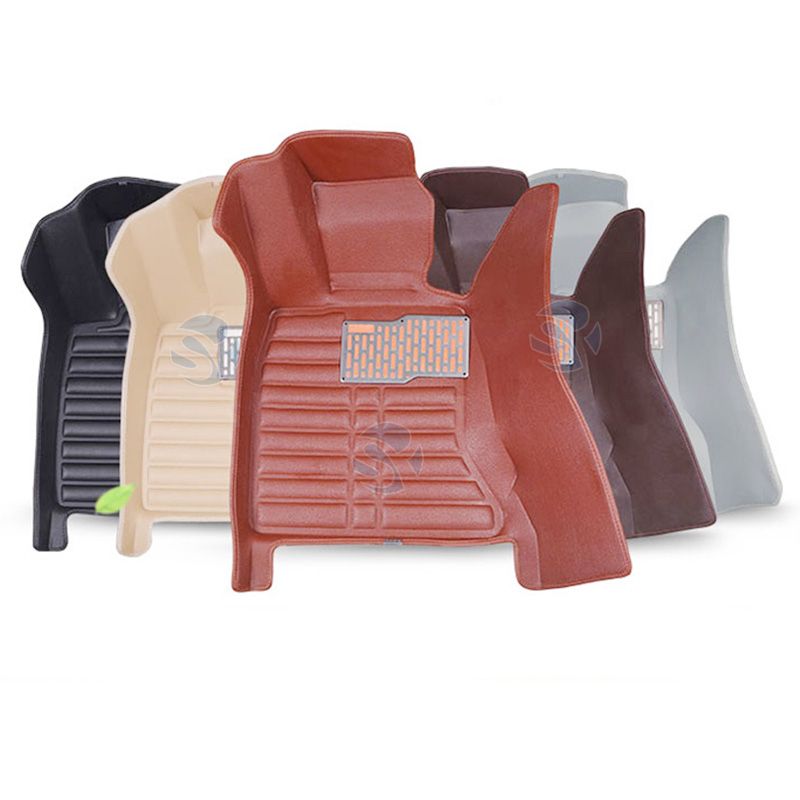
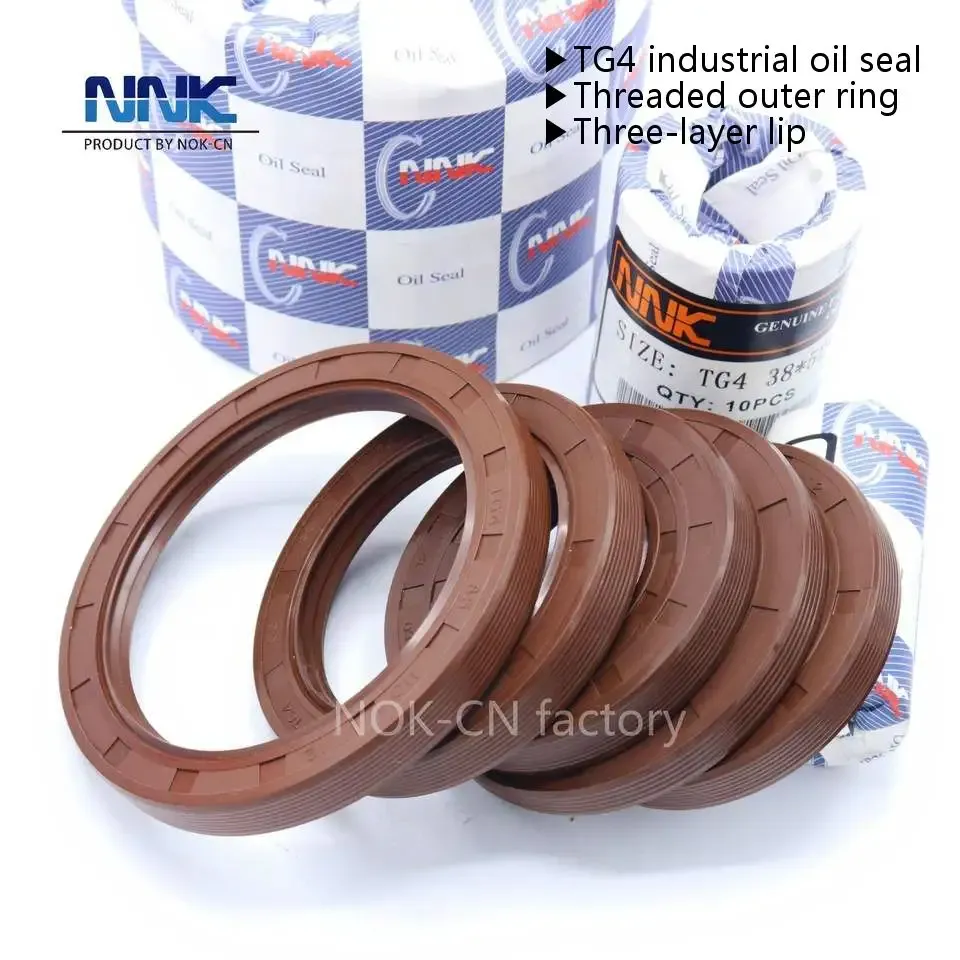
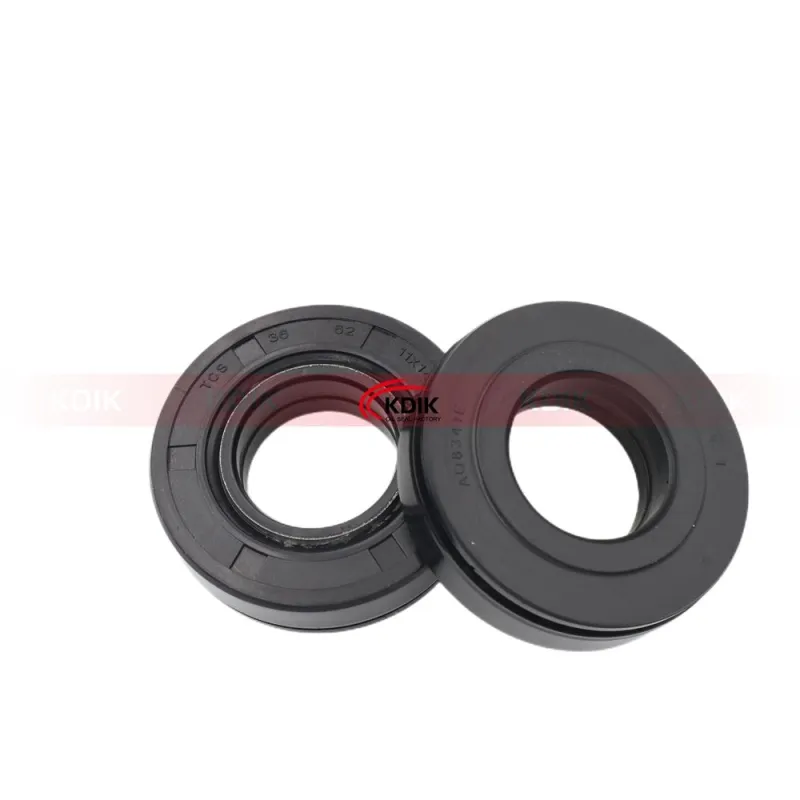
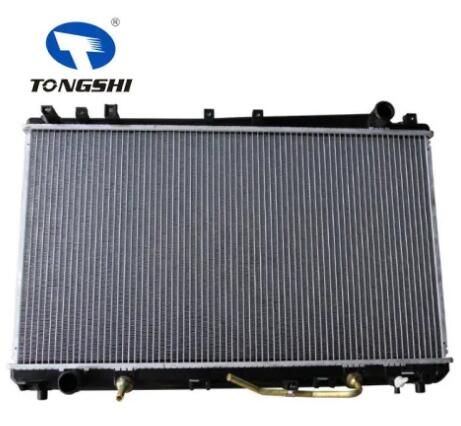
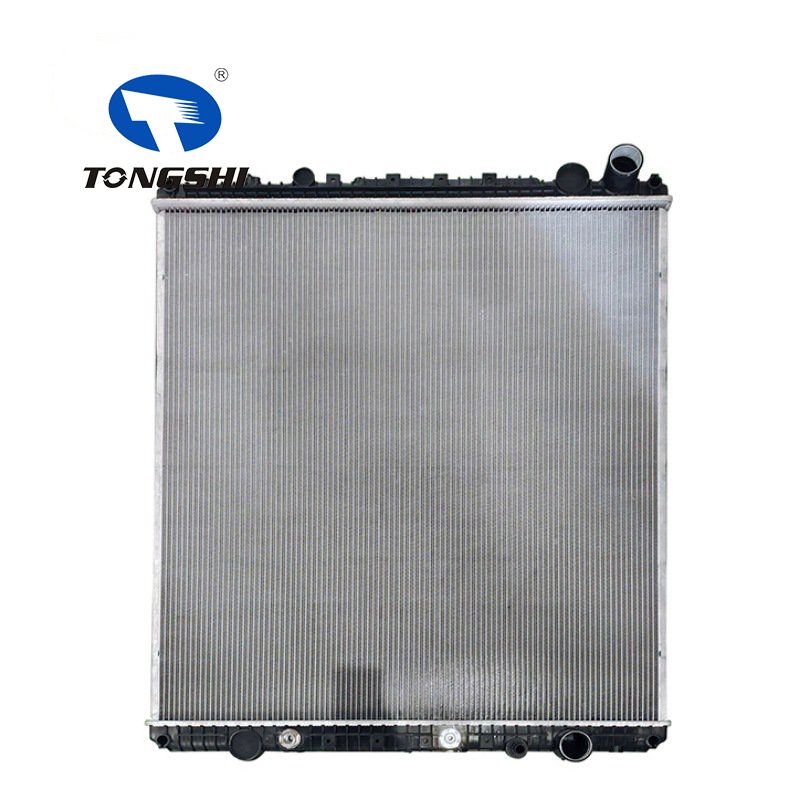
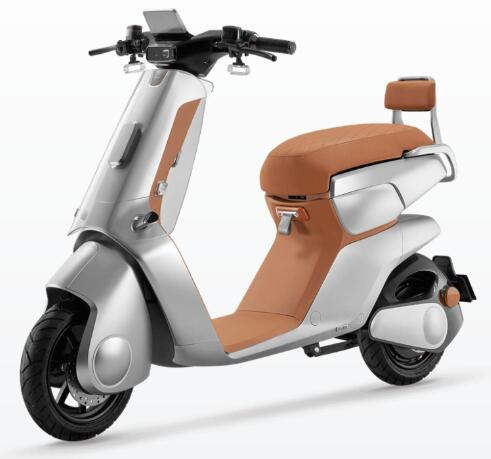
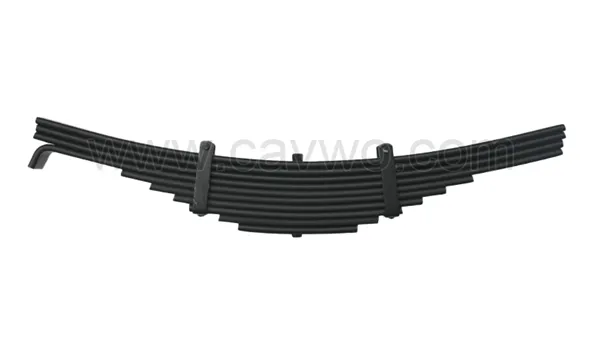
Comments
All Comments (0)